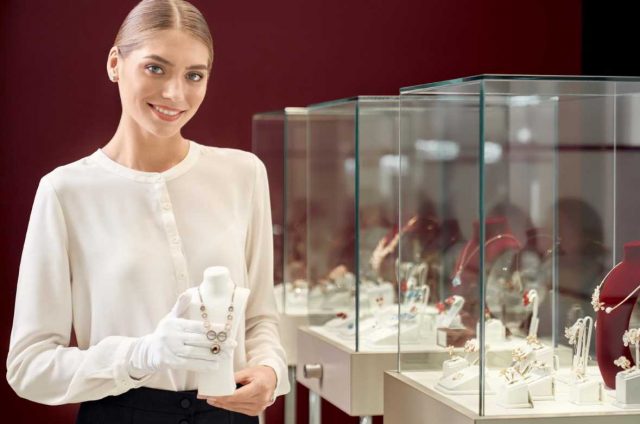The glitter of a diamond speaks love more than the word itself. It’s the embodiment of intimacy that makes your lover look classy and elegant. Diamonds are among the oldest and most fashionable gems, a worthwhile investment.
If you want to gift a diamond to your partner, take time and do keen research before settling on a given model. Are you looking to purchase wholesale jewellery-loose diamonds, either single or mounted on an engagement ring? This write-up is your complete guide.
What to consider when buying Diamonds
Choosing a diamond involves getting familiar with the language of diamonds. It’s not magic! The process includes an understanding of the 4 Cs, which determine the quality of a diamond. These are cut colour, clarity, and carat.
1. Cut
Diamonds are mined in their raw form. To craft them into a piece of jewellery, experts conduct extensive polishing and shaping. The cut of a given diamond regards its design and shape as done by the jeweller, directly affecting the stones selling value. When the precious stone is precisely cut, light enters the jewel and reflects, bringing out the catchy spackles that make the diamond attractive. The cuts grade diamond into ideal, very good, good, fair and poor.
2. Color
Mostly, diamonds come white (transparent) but may also bear other hues like yellow or brown. Diamonds are classified following a GIA colour system that levels them from D to Z. the D class stands for the completely colourless stones, while the Z category represents the very discoloured diamonds. Of the grading system, anything between D and K is considered clear and most valuable.
3. Clarity
Clarity refers to the diamond’s interior flaws or inclusions and the exterior flaws/blemishes. The lesser the blemishes and inclusions, the more the clarity of the diamond. Here is the GIA clarity grading system:
| Grade | Full-form | Meaning |
| FL | Flawless | No detectable flaws under 10x magnification |
| IF | Internally Flawless | No detectable inclusions but available surface flaws under 10x magnification |
| VVS1/VVS2 | Very Very Slightly included | Inclusions and blemishes extremely hard to detect |
| SI1/SI2 | Slightly Included | Flaws easily detectable under 10x magnification, and some visible to naked eyes |
| I1, I2, I3 | Included | Flaws are obvious under 10x magnification and also easily visible to naked eyes. |
4. Carat Weight
The last C regards the actual size of a diamond. One carat is divided into 100 points, with 5 carats making 1 gram. Remember not to confuse a carat with “Karat”, which refers to “purity of gold”. The carat weight identifies the size and appearance of a diamond jewel.
Tips for buying diamonds
1. Check the certification
Certification determines the legitimacy of a diamond. All reputed jewelers will always pass on a certificate for every diamond you purchase. Don’t fret when getting your fiancée the stone. The certificate acts as an insurance cover once your diamond ring turns out it was fake. Don’t purchase the diamond jewel if they don’t issue you with a valid certificate.
2. Purchase Diamond from an authorized Jeweler or Online operator
The online jewel business is ever-growing; thus, you can purchase a diamond ring anytime. The supply is plentiful, and some come attached to yummy discounts. However, this dearth is a recipe for imposters in the sector. Purchase diamond rings only from reputable online and offline jewellers. Don’t let the discounts lure you. First, investigate and transact with only veterans in the diamond business. Also, dig deep into their social media profiles and check for the available reviews and whether they conduct clean business. Also, consider their returns and refund rules before finalizing the deal.
How to Differentiate A Real And A Fake Diamond
The diamond market floods with both legit and counterfeit stones. However, there are simple tricks that you can employ to check the authenticity of the jewel you are about to purchase. Here are some simple yet trusted tests to tell apart a fake diamond from a real one.
- Breath test: diamonds are great conductors of heat, and this test relies on the rule. The moment you breathe on a natural diamond, the grey fog created by the breath disappears almost instantly from the stone’s surface. On the other hand, fake diamonds don’t conduct heat efficiently, and the moisture takes time to clear out. Nevertheless, a Moissanite material is similar to a diamond in structure and properties. And this one may pass the breath trick. Either way, if you are still concerned about the authenticity of your stone, you must check the facets of the ring you purchased. Diamonds and moissanite get trimmed using divergent faceting patterns. So the two stones will have different appearances.
- Sandpaper test: Diamond tops the list of many hard things on earth. All you need to find out if it’s fake or real is a rub with sandpaper. A gentle rub with sandpaper on the surface of a natural diamond stone will cause no bad effects on it. A fake one will quickly get scratches.
Wrap up
Though beauty lies in the eyes of the beholder, you’ll not want to walk home with a fake diamond ring. Learn the basics of diamonds and do research before making a final decision. Don’t let the lowered prices play the trick, but keep the tactics in mind to avoid getting duped on your lovely day.

A professional writer with over a decade of incessant writing skills. Her topics of interest and expertise range from health, nutrition and psychology.




